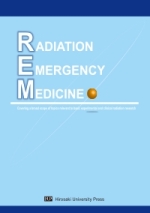Chinese Public Health Response to Accident at Fukushima Daiichi Nuclear Power Plant
View article content
Quanfu Sun, Cuiping Lei, Changsong Hou, Wei Zhang and Xu Su∗
National Institute for Radiological Protection, Key Laboratory of Radiological Protection and Nuclear Emergency
Chinese Disease Control and Prevention
- Abstract
On March 11, 2011, a powerful magnitude 9 earthquake caused a substantial tsunami off the northeastern coast of Japan which had a disastrous impact upon the Fukushima Daiichi nuclear power plant, which was to attract worldwide attention. The Chinese Center for Medical Response to Radiation Emergency (National Institute for Radiological Protection, Chinese Center for Disease Control and Prevention (CDC)) carried out the public health response to Fukushima Daiichi accident and had excellent results due to appropriate organization, a timely response, accurate analysis and judgment, decisive support and scientific decision-making and recommendations. The public health response covered risk communication, the measurement of food, drinking water, and monitoring body surface contamination. The response was a field trial of the preparedness of the response system to a nuclear accident and a capacity test on the surveillance and monitoring of public health in China. The response also revealed some problems in the preparedness of the response system to a nuclear accident.



